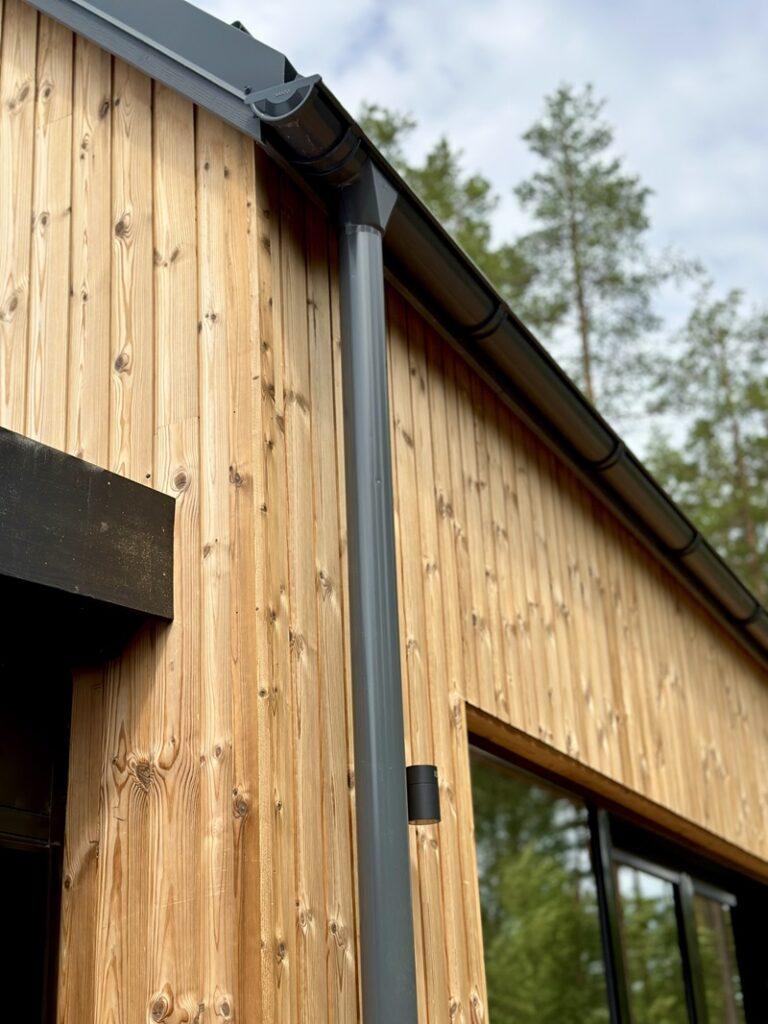Fire protection regulations for buildings will become even more stringent in the future. Siparila has considered this, especially in products made from thermally wood: the innovative treatment also enables the required fire protection class for thermally modified wood.
Thermally modified wood has been produced in Finland since the 1990s. The original modification technique for thermally modified wood involved drying and heating the wood, but it remained too brittle because the moisture was not returned to the wood. Today, both the process and the recipe have been modified so that instead of a brittle structure, the result is a product that is highly resistant to the elements.
Although heat treatment of wood has been possible for decades, thermally modified wood and its potential are still not well known in Finland today. As a result, much of the thermally modified wood produced in Finland has been exported abroad, with sufficient demand for it.
One reason for the popularity of thermally modified wood is its weather resistance. Furthermore, thermally modified wood has proven durable in various conditions, from Finland to the Mediterranean coast. In addition, when painted, thermally modified wood offers a long service life of around eight to ten years.
Heat treatment changes the structure of wood
CE marking of wood panels became mandatory in Finland at the beginning of July 2013. In practice, the marking required that every time wood is treated, its fire safety class must be verified by a classification report. Clean wood is fire class D as defined by the surface fire classes, which is also the minimum requirement for the fire protection class of interior and exterior surfaces.
Clean wood is class D according to the surface fire classes and untreated thermally modified wood is also class D if it has been subjected to an official fire test. When treated with, for example, paint, thermally modified wood loses its D fire classification - as the amount of substances on the wood increases, passing the D class becomes more challenging.
Thermally modified wood is more durable, easier to work, and less moisture-absorbent. Because of these characteristics, we wanted to find a solution that would allow us to offer fully finished thermally modified wood that would definitely achieve a D fire rating.
A new innovation to ensure D-rating
As a pioneer in wood construction, we wanted to ensure that thermally modified wood was D-rated and determine whether the fire-retardant industry had a treatment that would enable thermally modified wood to achieve D-rated performance. Such an innovation would allow the first in the world to offer a panel made of thermally modified wood.
For example, one successful outcome is Nordtreat Thermo Black, a future product: the bio-based treatment achieves a D-s1, d0 fire rating according to EN 13501-1 on the surface of Siparila's thermally modified wood. In addition, this treatment has a beautiful matt black satin color.
Siparila's thermally modified cladding products include THERMOCOAT exterior cladding panelsfor which the treatment ensures the required fire protection class D. THERMOCOAT combines the main characteristics of an exterior cladding panel, namely rot resistance and excellent weather resistance.
» Discover our exterior cladding panels




